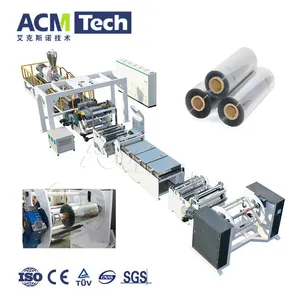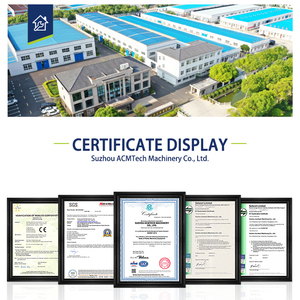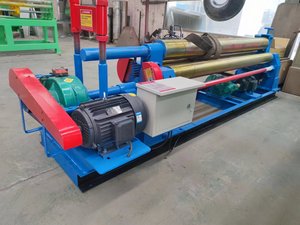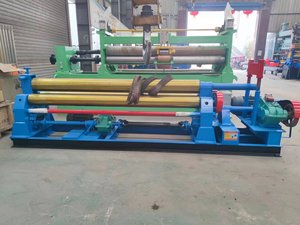
All categories
Featured selections
Trade Assurance
Buyer Central
Help Center
Get the app
Become a supplier

(5342 products available)













Rolling machines for profile pipes can shape a variety of materials into curves, circles, and other custom forms. They are instrumental in the construction and manufacturing industries, especially when dealing with profile pipes. Rolling machines can be categorized into hydraulic, mechanical, and electrical systems based on how they are controlled.
Some rolling machines for profile pipes can also be categorized by the number of rolls. There is 3-roll rolling machines for profile pipes, which have two horizontal rolls and one vertical roll. Using a 3-roll rolling machine for profile pipes, an operator can roll an entire plate to make cones, cylinders, and semicircles. The machine is prevalent in the energy, engineering, and transportation sectors.
4-roll rolling machines for profile pipes are more complicated because they have two lower rolls that are fixed and one upper roll that can be moved, which are symmetrical. In addition to performing operations of the 3-roll rolling machine, the 4-roll rolling machine for profile pipes can pre-bend workpieces at both ends simultaneously.
CNC rolling machines for profile pipes are fully automated because they have a computer numerical control (CNC) system. This allows the machine to accurately and quickly bend to complex shapes and several units of them without requiring human attention.
The rolling machine is manufactured with precise bearings and gears that can withstand robust material in all kinds of weather. The machine comes with manual and digital controls that can be operated by a single person from both ends. To get better deals, it is a good idea to get wholesale rolling machines that come with a warranty for one to sell to customers with a guarantee of quality.
Maintenance:
The rolling machine will need some overall maintenance once in a while, and the following areas should be checked and maintained.
Rolling machines are used in various industries and applications. Some of the primary use scenarios of a rolling machine are as follows:
Heavy Industrial Application
An industrial rolling machine is an essential equipment in metallurgy factories. It is used for the rolling process in metal forming. Various types of metal materials like alloy steel, carbon steel, stainless steel, etc., are altered through the machine to produce different shapes such as sheets, plates, pipes, strips, etc. The rolling machine increases the productivity of the factory and plays an essential role in the final quality of the metal materials.
Construction Industry
In the construction industry, rolling machines are used to bend metal pipes and profiles. The resulting materials are used for structural constructions such as frames, trusses, windows, door reinforcements, and other structural elements that provide support and stability to buildings. The durability of the rolling machine ensures that construction projects run smoothly without delays due to equipment malfunction or breakdowns.
Aerospace and Automotive Industry
Both the automotive and aerospace industries use rolling machines to create body parts or structural components made of different metal profiles and sheets. Rolling machines can also be used to produce parts like axles, flywheels, bumper reinforcements, bearing races, and more. Alloy wheels are manufactured using rolling machines. Advanced machines with digital controls are mainly used in the aerospace industry to create lightweight yet strong components for aircraft construction.
Sign and Steel Marketing Industry
The sign and steel marketing industry uses rolling machines to create signage and display stands. Rolling machines are used to curve and bend metal sheets and plates for the production of sign frames, bases, and mounting brackets, among others. Using digital control helps ensure precision and consistency when making multiple sign products. The successful and efficient creation of marketing steel helps companies grow their business.
Industrial buyers and business buyers should consider the following factors when selecting a rolling machine for pipes:
Capacity and Size:
They should choose a machine that can roll materials with a thickness and diameter that matches their needs. It's important to consider the maximum width of the material they plan to work with, as well as the machine's capacity in terms of weight and dimensions.
Material Compatibility:
Different rolling machines are designed to handle specific types of materials. For instance, a metal rolling machine for pipe will be suited for metal pipes, while a plastic rolling machine will cater to plastic profiles. Ensure that the machine chosen is compatible with the materials used in the business.
Precision and Accuracy:
Depending on the requirements of the industry, calibrate the rolling machine to ensure that it can roll pipes to the necessary precision. Consider its accuracy, adjustability, and control systems like digital readouts or computer numerical control (CNC) for precise rolling.
Durability and Build Quality:
Choose a machine with high durability and build quality to ensure it withstands the demands of regular use without frequent breakdowns or maintenance requirements. This will help minimize downtime and improve productivity.
Safety Features:
Consider the machine's safety features, such as emergency stops, guards, and safety interlocks. Ensure it has proper safety standards and certifications to protect operators' safety and reduce the risk of accidents.
Q1: How are rolling machines different from bending machines?
A1: Rolling machines are used to bend sheets and plates into round shapes as well as deal with cylindrical shapes. On the other hand, bending machines are suitable for making angular profiles on metals.
Q2: What is the trend in the rolling machine market?
A2: The market is moving towards automated and CNC-controlled rolling machines, which provide higher precision and efficiency. There is also a growing demand for rolling machines that can process multiple types of materials.
Q3: Are rolling machines environmentally friendly?
A3: While rolling machines themselves aren't directly related to environmental issues, the recycling of sheet metal and materials is important. Some rolling machines can use recycled materials and innovative processes to reduce waste and energy consumption.
Q4: What materials can be rolled with a rolling machine?
A4: Rolling machines can roll various materials, including carbon steel, stainless steel, aluminum alloy, copper, titanium, etc. Different materials require different types of rolling machines to achieve the desired rolling effect.